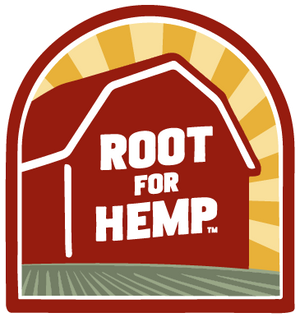Environmentally conscious individuals understand the importance of embracing plant-based alternatives for the betterment of our planet. While bamboo and organic cotton have gained considerable popularity, it's time to shine a spotlight on hemp as a significant player in sustainable living.
Hemp cultivation offers numerous environmental advantages.
It can be grown using locally adapted varieties that thrive without the need for fertilizers or pesticides. With its deep-reaching roots, hemp aids in soil restoration and stabilization, all while being an efficient water-wise crop. Given the pivotal role of land regeneration in fostering sustainable life on Earth, the benefits of hemp are too significant to overlook.
Yet, the true allure of hemp lies in its remarkable versatility.
From home insulation to hardwood floorboards and various building materials, hemp can be fashioned into an array of products. It finds application in countertops, upholstery, furniture, and serves as an exemplary raw material for textile production. Nearly everything currently derived from plastic could be replaced by hemp, given its durability, sustainability, and compostable nature. Whether in fiber form or other iterations, hemp stands as a more sustainable alternative to most conventional raw materials. This multifaceted wonder weed is poised to form the cornerstone of sustainable living, encompassing every facet under your roof.

For much of human history, Hemp has been known as a “camp flower” – an essential crop carried around through ~12,000 years of human migration. The ancient Persian word for hemp is Shaah-daaneh, or “King of Seeds.”
Legalized again in the United States in 2018, the King of Seeds reputation bodes well for Hemp as the ultimate comeback crop.
Recently, we visited a hemp research field by the University of Colorado Boulder. The field was part of the dissertation research project by Leo Orozco, a PhD student in Ecology and Evolutionary Biology. Leo’s research centers on unraveling the intricate systems-level regulation of flowering in Cannabis Sativa (Hemp) and understanding how these biological networks respond to stressors using hormone signaling. We were also joined by Zach Marcus, the lab manager and research associate collecting samples and sequencing the hemp DNA for this project. The research project has been advised by Professor Nolan Kane, a renowned expert in genomics and evolutionary biology of sunflowers and cannabis.
Standing in the field with three hemp researchers, we learned a lot more about the state of industrial hemp today. We learned it is a lot different than cannabis cultivation. Cannabis cultivation focuses heavily on the female flower only, maintained by varying degrees of artificial controls on nature. Industrial hemp thrives in a much less controlled/managed way – it does best when left to grow like a weed.

We learned that gender expression in a hemp farm is on the spectrum.
This research team is studying how the X and Y chromosomes express all kinds of different characteristics about the plant that are not related to reproduction. All reproductive parts can even coexist on the same plant. Lots of female plants have pollen sacs below the buds. Male plants are dusting abundant pollen though the dry Colorado air, while also sporting branches full of fragrant buds. Female plants have fragrant flowers, and male plants have the softest fiber at their core.
Cannabis farming is only for the cultivation of female flowers, males are culled early because their pollen will cause the buds to go to seed. Seeds are not a desired byproduct in cannabis cultivation. With hemp cultivation, we want seeds – they are the most nutritious part of the plant! We learned that the seeds are tasty, nutty, and fun to eat a handful right there in the field. Hemp, too, may even have something to teach humans about gender coexisting on a spectrum.

The researchers told us how we still know so little about this plant because we couldn't farm it for the last 81 years, our agricultural forced error of prohibition. We also failed to preserve native knowledge from the folks who grew regionally adapted landrace hemp here for eons. It hasn't seen a path like corn, where we were proactive in developing specialized farm equipment honed over generations.

We have so much left to learn about growing hemp at scale.
We are still learning which varieties will thrive in different regions, which is best for specific fiber and nutritional uses, which produces the highest yield. However, we already know that hemp is a viable alternative to trees for many needs. Research has proven that when we grow hemp for ourselves, hemp returns the favor to Mother Earth along the way.
In anticipation of demand for this wonder weed, these researchers are creating a catalog of 1,000 genetics with dreams of hemp’s bright future as an iconic American cash crop. “I can’t believe I get to write my dissertation on this,” said Leo.
What a time to be alive.






